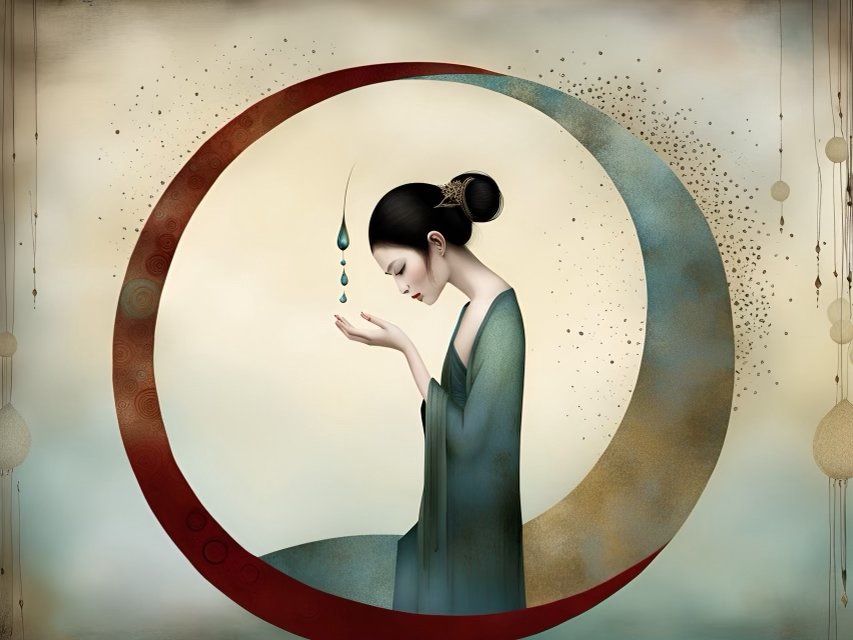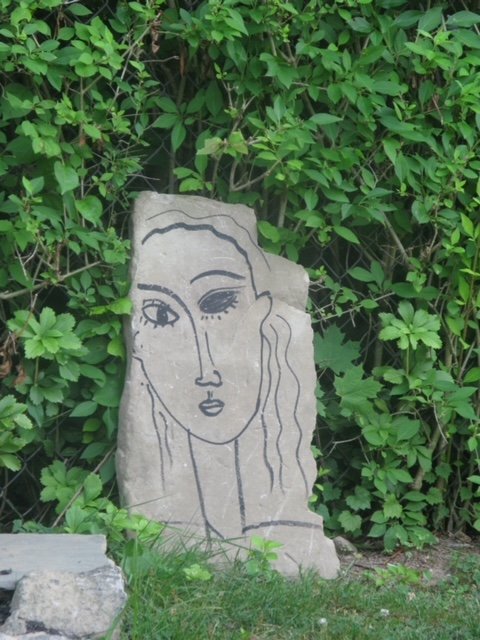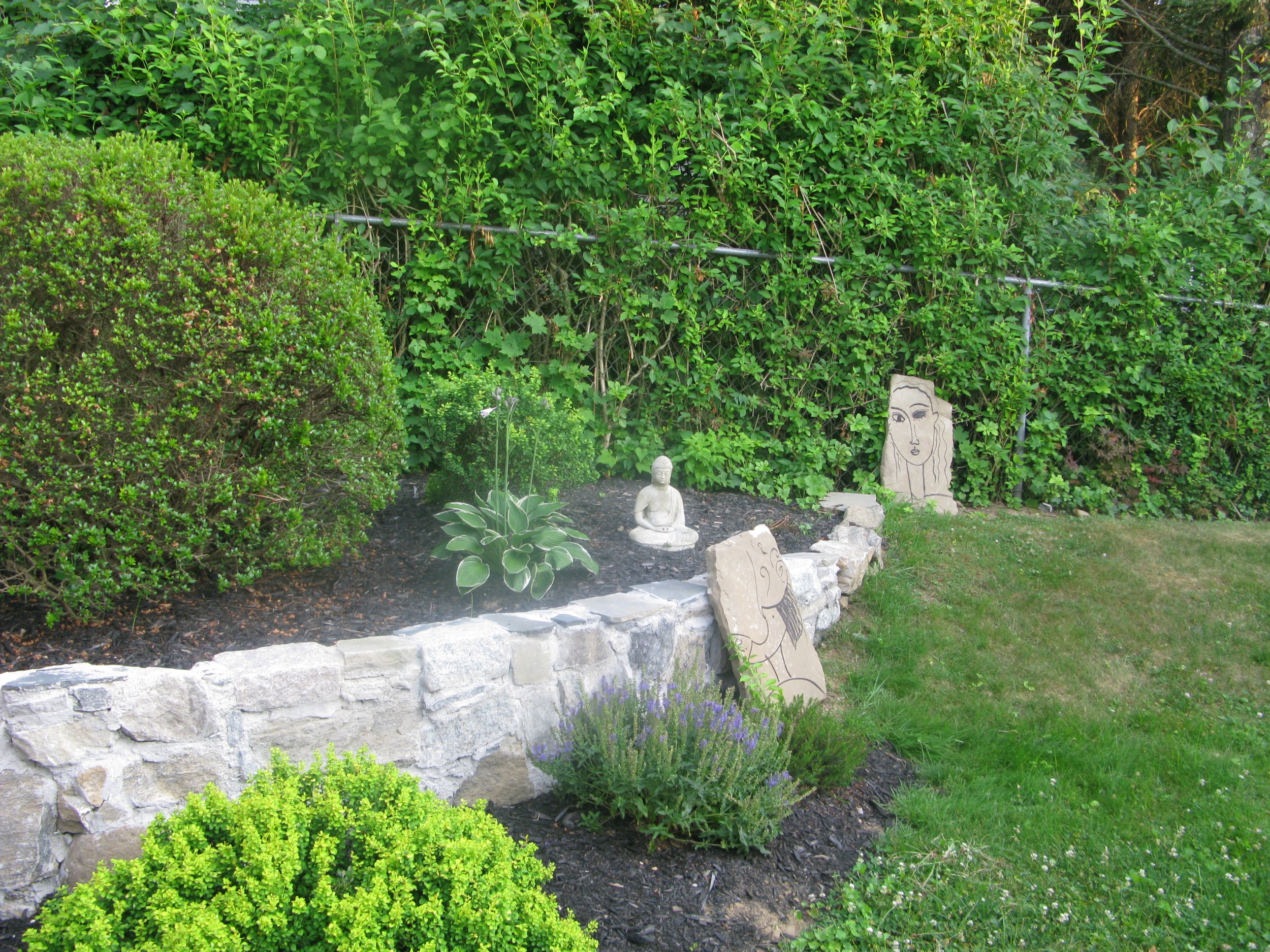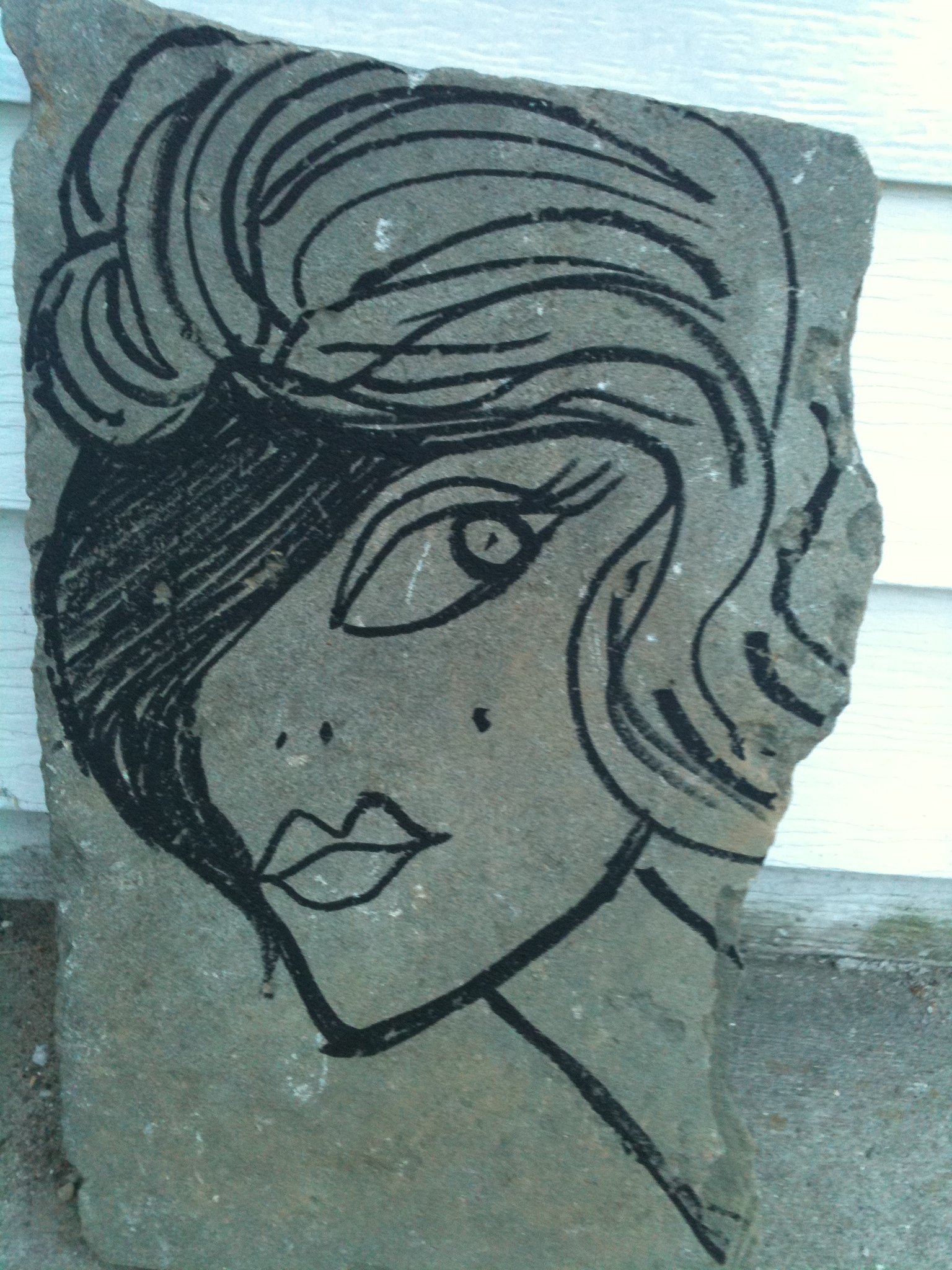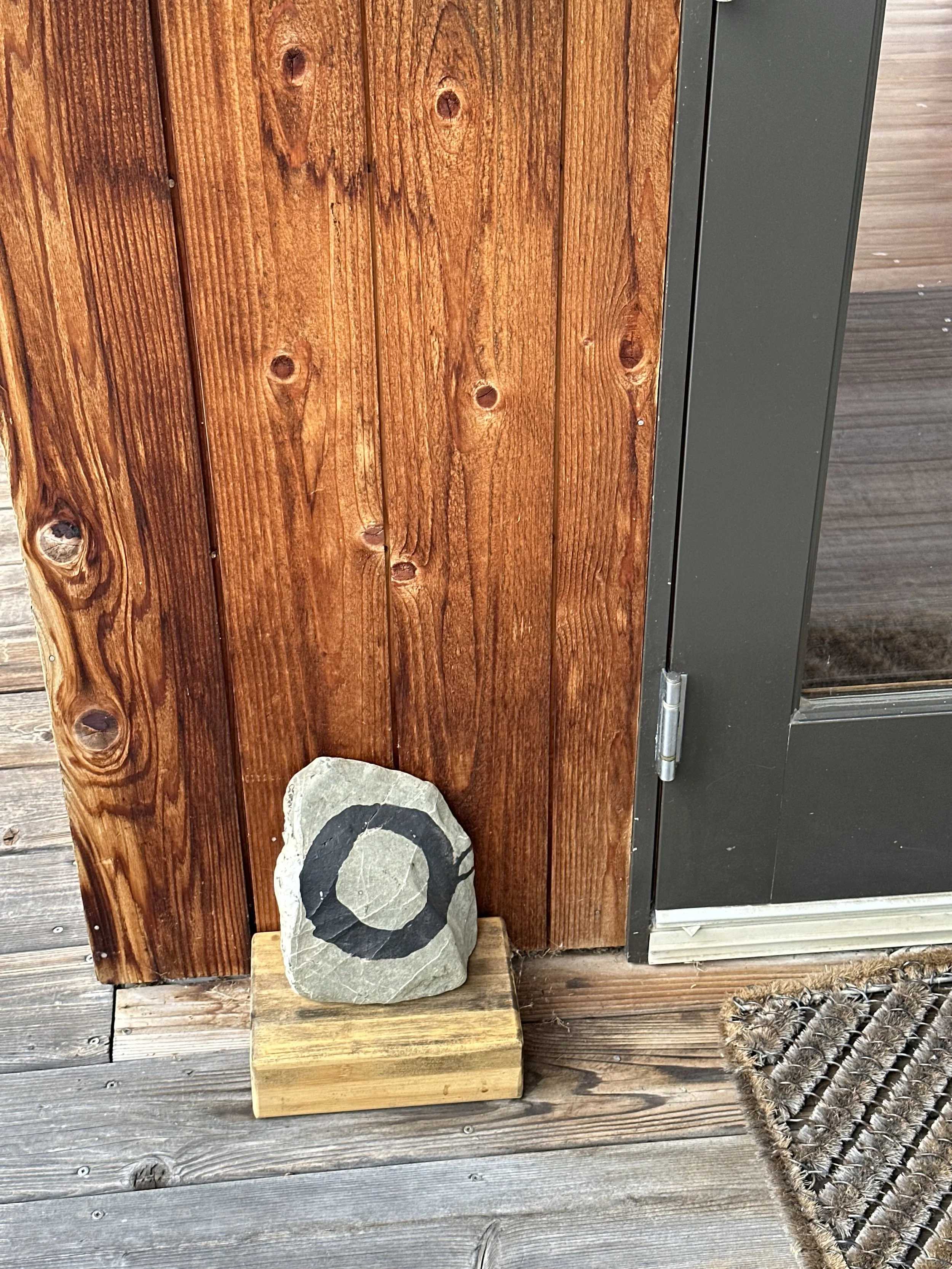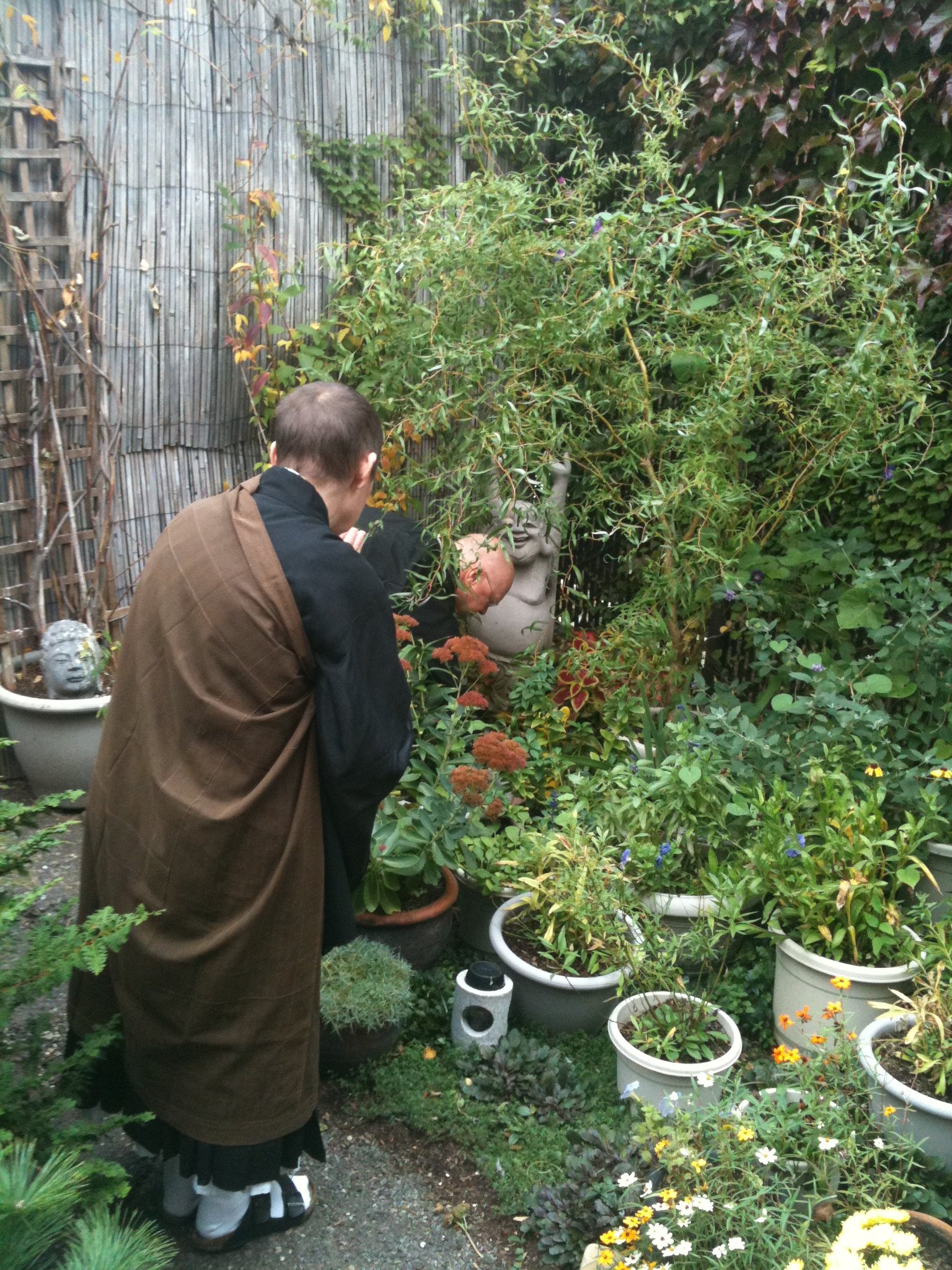The Sweetcake Ensō
Dr. Annecy Baez experiences the iconic Zen circle, symbol of presentness in lo cotidiano
“While at first glance, the enso symbol appears no more than a misshapen circle, it symbolizes many things: the beauty in imperfection, the art of letting go of expectations, the circle of life, and connection. The enso is a manifestation of the artist at the moment of creation and the acceptance of our innermost self. It symbolizes strength, elegance, and one-mindedness.”
–From ”My History: The Story of an Enso” by Barbara Bash, therapist and artist
In Zen philosophy, an ensō is a circle that is hand-drawn with one or two free-flowing brushstrokes, symbolizing a moment when the mind is liberated to allow the body to create. The ensō embodies the concept of impermanence, signifying that everything in life is ever-changing.
In 2010, just a year before my husband's passing, the Empty Hand Zen Center in New Rochelle, New York presents a request for submissions from artists in the zendo to an inaugural exhibition titled Sweetcake Enso. The exhibit, according to the Center, aims to draw “attention to the abstract circle as a symbol of presentness in daily life” and to serve as “a tribute to the teachers who have come before us and those who are with us now, to an exchanging of the bones from one generation to the next.”
I understand that drawing an ensō is a spiritual practice, something one can do daily–but I have no idea what a “sweetcake” ensō looks like. As my Zen teacher puts it, the ensō is a traditional brush-painted circle–a circle of oneness, of emptiness– that illustrates the abundance of forms within itself. The sweetcake ensō, she explains, adds a unique twist by incorporating elements, such as collages or poems, within the circular form. This addition is a creative way to convey how ordinary images can represent enlightenment.
It’s an exciting proposition.
As I consider myself a self-taught artist, I begin to practice drawing my sweetcake ensō. Every morning, I can create sweeping strokes to ready myself for the eventual Sweetcake Enso exhibition.
At this time, my husband has created a beautiful garden with a semi-circular wall in front of my study. He designed this space for me to find inspiration in the fragrance of the garden while I write. While clearing the garden, he had discovered large slabs that resemble gravestones. I take it upon myself to paint assorted images on these slabs, channeling the styles of artists like Picasso or Mondigliani, my personal favorite. Soon, my husband is visiting Home Depot to acquire more of these "canvas" slabs for me to work on.
Artwork by Annecy Baez, Irvington, NY, 2010. Photo: Annecy Baez
It’s also during this period that the idea strikes me to create my sweetcake ensō on one of these unique "canvases." I carefully craft my ensō, inscribing a poem by the American Catholic monk Thomas Merton, his interpretation of the Taoism lessons imparted by the 4th-century Chinese philosopher and Zen poet Chang Tzu (also known as Zhuang Zhou or Zhuangzi).
When the Shoe Fits
By Thomas Merton
Inspired by the translated works of Chuang Tzu
Ch'ui the draftsman
Could draw more perfect circles freehand
Than with a compass.
His fingers brought forth
Spontaneous forms from nowhere. His mind
Was meanwhile free and without concern
With what he was doing.
No application was needed
His mind was perfectly simple
And knew no obstacle.
So, when the shoe fits
The foot is forgotten,
When the belt fits
The belly is forgotten,
When the heart is right
"For" and "against" are forgotten.
In The Way of Chuang Tzu by Thomas Merton (Abbey of Gethsemani, 1965)
Sweetcake ensō by Annecy Baez, Irvington, NY, 2010. Photo: Annecy Baez
I submit my artwork for review to the Sweetcake Enso exhibit organizer, a senior student living with my teacher. Instead of a straightforward rejection of my work, I receive a curt email conveying that I have not reached the artistic level of those who have invested years in honing their craft. As a result, my sweetcake ensō cannot be included in the exhibit. She cc's my teacher in this communication.
The email leaves me with a sudden loss of breath. I find myself extrapolating her assessment of my limited artistic prowess to other areas of my life where–up until now–I felt confident and creative.
Is my perception of being a self-taught artist simply an illusion?
I wonder what this moment wants me to see, to learn. I think of the words of Dogen Zen Ji, a Japanese Buddhist priest, writer, poet, philosopher, and founder of the Sōtō school of Zen in Japan:
“To study the self is to forget the self. To forget the self is to be enlightened by the ten thousand things” (Genjōkōan).
I enter my bedroom.
I carefully retrieve my rakusu—a square piece of cloth meticulously sewn by hand using various materials. It soon gracefully adorns my neck, cascading down my body with elegance, a reminder of my commitment to the Zen Path. Memories flood back to my Jukai ceremony, where I received the precepts. Hidden in the back of the rakusu is the Dharma name chosen for me by my teacher: Renshin, which translates to "Lotus Heart."
“Like a lotus flower emerging from muddy waters, your resilience blooms above the surface,” she said to me during the ceremony.
Lotus Heart — an ever-present reminder of my ability to transcend life’s challenges and obstacles.
As I touch the rakusu, I say the words inscribed above my name:
"Great robe of liberation, a field far beyond form and emptiness, draping ourselves in Buddha's teaching, we save all beings" (Robe Chant).
These deeply resonant words compel me to embrace the teachings and engage in meditation. I sit on my zafu meditation cushion, a gift from my husband, close my eyes, and breathe…
…acknowledge emotions arising…disappointment, sadness…rippling…waves in a pond…shame, humiliation…a wish to push them away…allow…to pass through me…clouds…across vast blue sky…I am sky…unwavering…in this discomfort…patiently…wait…emotions come…emotions go…
Finally, when I sense a moment of accepting my limitations, I take a breath…
…Neither am I infallible nor perfect…Pain often stems from unmet expectations or personal dislikes…It is fine…I do not require my sweetcake ensō to be displayed for others to see…My worth extends beyond the opinions of others...Faith in mind…
“Inscription on Faith in Mind” or the “Hsin Hsin Ming” is a sixth-century poem by Seng Ts'an (Jianzhi Sengcan or “Gem Monk”), the third patriarch of Chan, a Chinese school of Buddhism and the originating tradition of Zen Buddhism.
The “Hsin Hsin Ming” was my teacher’s teacher’s favorite poem, which has now become mine.
Excerpt from Verses On the Faith Mind
By Seng Ts'an
Translated by Richard B. Clarke
至道無難 The Great Way is not difficult
唯嫌揀擇 for those who have no preferences.
但莫憎愛 When love and hate are both absent
洞然明白 everything becomes clear and undisguised.
毫釐有差 Make the smallest distinction, however
天地懸隔 and heaven and earth are set infinitely apart.
欲得現前 If you wish to see the truth
莫存順逆 then hold no opinions for or against anything.
違順相爭 To set up what you like against what you dislike
是爲心病 is the disease of the mind.
不識玄旨 When the deep meaning of things is not understood
徒勞念靜 the mind's essential peace is disturbed to no avail.
圓同太虚 The Way is perfect like vast space
無欠無餘 where nothing is lacking and nothing is in excess.
“Ensō blurry” by Annecy Baez
From “Faith Mind Poem” in Liturgy Manual of Zen Mountain Monastery (Dharma Communications, 1998) by John Daido Loori.
English translation by Richard B. Clarke originally published in Zen Bow 1.2 (February 1968).
I take a breath.
I sense the air returning to the room, the weight on my chest lifting. There's comfort in being present, in understanding that life has its disappointments. I navigate the realm of emotions with a steady heart. I embrace the wisdom of Zen. The teachings of Buddhism remind us that all emotions–embarrassment or shame–are temporary and will eventually pass.
I take a breath.
I fill the room with renewed energy that washes away my concerns. It brings to mind a conversation between Buddha and his disciple Subhuti, when they discuss how all labeling or categorization is an illusion.
“This fleeting world,” says Buddha, “is like a star at dawn, a bubble in a stream, a flash of lightning in a summer cloud, a flickering lamp, a phantom, and a dream”
(The Diamond Sutra).
Several hours later, an email arrives from my teacher: an apology, accompanied by an explanation that my sweetcake ensō can, in fact, be included in the exhibition, after all.
A sense of relief washes over me–but it is short-lived.
There are stipulations. The acceptance comes with rather specific conditions: my artwork will not be featured in the brochure with a price or with my name, and my artwork will not find a home within the revered sanctuary of the zendo. Instead, my sweetcake ensō will be displayed outside, near the garden entrance of the Empty Hand Zen Center.
I accept these terms graciously.
Digital brush ensō by Annecy Baez
“I take a breath.”
On the day of the exhibition, my husband accompanies me.
As we walk inside, I am immediately taken aback by how much the zendo resembles a gallery that could easily be part of the Museum of Modern Art (MoMA). It is, at this moment, that I truly grasp the idea that my artwork does not quite belong within these walls. It dawns on me that the other pieces on display—each one a masterpiece in its own right—exude a level of elegance and artistic finesse that I could not fully appreciate until now. They effortlessly capture the tranquility and profound spirituality of the zendo, while my creation seems ordinary and uncoordinated.
As the sheer beauty radiating from these artworks overwhelms me, I come to a realization:
I, Renshin, managed to create one of the most unremarkable sweetcake ensōs in this entire zendo.
The disappointment is deep. My artistic vision fell short of the expectations. I poured my heart and soul into crafting my sweetcake ensō, believing it would resonate with the exhibit.
But now, as I gaze at my creation in the context of the exhibit, it seems just right that my teacher chose to place my sweetcake ensō outside, in the stone garden by the front door of the zendo, greeting those who enter.
In this moment, I am humbled.
Sweetcake ensō by Annecy Baez, displayed near the garden entrance of the Empty Hand Zen Center during its Sweetcake Enso exhibition, New Rochelle, NY, 2010. Photo: Annecy Baez
The ll Won Sang (O), the circular symbol of the Dharmakaya Buddha, at the entrance of the main Meditation Hall at Won Dharma Center, where Annecy Baez currently practices meditation, Claverack, NY, 2023. Photo: Annecy Baez [‘Won’ (圓), meaning ‘circle,’ and the Buddha Nature of all beings]”
A few hours later, my teacher brings relief to my anxiety with an announcement: someone has expressed interest in purchasing my sweetcake ensō!
The interested buyer is a remarkable woman, tall and dignified, who experienced the loss of her husband and wants to adorn her special garden with my artwork. She engages me in a profound conversation, asking numerous questions about my sweetcake ensō, including its price.
During this interaction, my teacher beams with pride.
The interested buyer then poses the most remarkable question:
"If I place this sweetcake ensō in my garden and it rains, will it lose its color? Will the image and poem vanish?"
Suddenly, the moment of my greatest insecurity becomes a teaching moment.
The ensō, I explain, serves as a symbol of the ever-changing nature of existence, embodying the fundamental Buddhist concept of impermanence. Everything in life is in a constant state of flux, and nothing remains static. I emphasize that each moment is fleeting, here and then gone, and it serves as a reminder to live each moment as if it were our last.
Both my teacher and my husband nod in agreement.
“‘Like a lotus flower emerging from muddy waters, your resilience blooms above the surface,’ she said to me.”
The late Jion Susan Postal (foreground), founding teacher of the Empty Hand Zen Center, and the late teacher and Dharma heir Myozan Dennis Keegan at the zendo’s garden, New Rochelle, NY, ca. 2010. Photo: Annecy Baez
Ultimately, I decide against selling.
Instead, I find a special spot for my sweetcake ensō in the crescent garden that my beloved husband has crafted with such devotion. A year later, he passes away, and I have to leave behind not only the garden but also the memories that it holds. In my new home, I carefully relocate my sweetcake ensō to the garden, nestling Renshin’s creation among the azaleas.
There, it stays until the rains gracefully erase the image and the poem, a poignant reflection of the very impermanence the ensō is made to symbolize.
RESOURCES
Won Buddhism Dharma Talks, Won Buddhism of Manhattan
The Zen Studies Podcast with Domyo Burk

